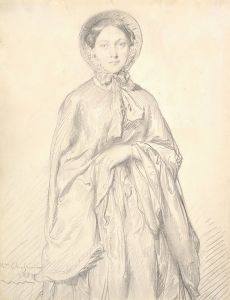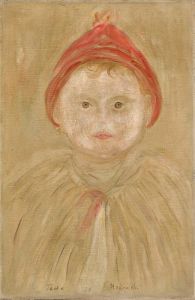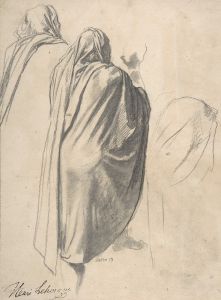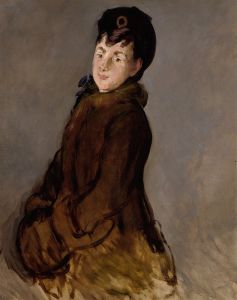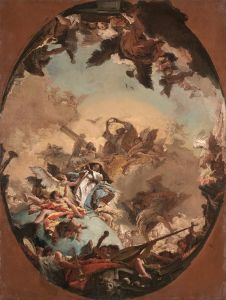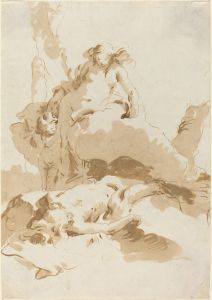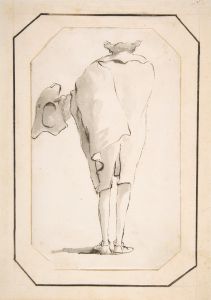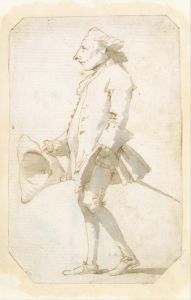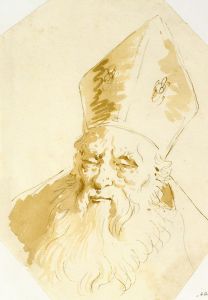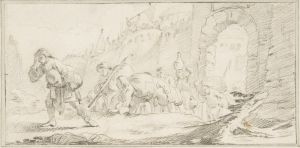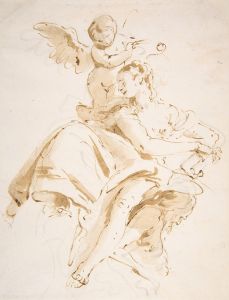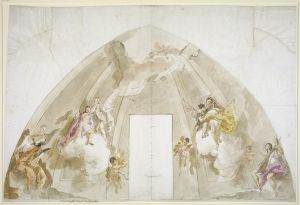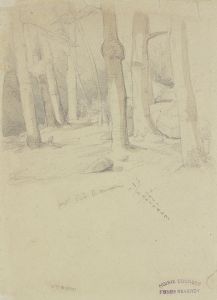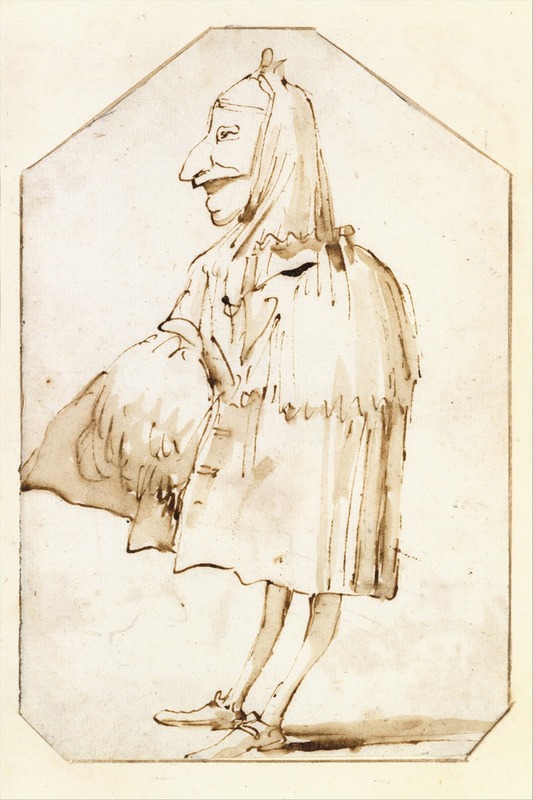
Caricature of a Man in a Mask and a Cloak, Holding a Muff and a Tricorne, Standing in Profile to the Left
A hand-painted replica of Giovanni Battista Tiepolo’s masterpiece Caricature of a Man in a Mask and a Cloak, Holding a Muff and a Tricorne, Standing in Profile to the Left, meticulously crafted by professional artists to capture the true essence of the original. Each piece is created with museum-quality canvas and rare mineral pigments, carefully painted by experienced artists with delicate brushstrokes and rich, layered colors to perfectly recreate the texture of the original artwork. Unlike machine-printed reproductions, this hand-painted version brings the painting to life, infused with the artist’s emotions and skill in every stroke. Whether for personal collection or home decoration, it instantly elevates the artistic atmosphere of any space.
"Caricature of a Man in a Mask and a Cloak, Holding a Muff and a Tricorne, Standing in Profile to the Left" is a drawing by the renowned Italian artist Giovanni Battista Tiepolo. Tiepolo, born in Venice in 1696, is celebrated for his distinctive style and contributions to the Rococo movement. He is known for his frescoes, paintings, and drawings that often depict historical, religious, and mythological subjects with a sense of grandeur and drama.
This particular drawing is a fine example of Tiepolo's skill in caricature, a genre that he explored with great enthusiasm. Caricature, as an art form, involves the exaggerated portrayal of a subject's distinctive features or characteristics, often for comic or satirical effect. Tiepolo's caricatures are noted for their wit and the artist's keen observational skills.
In "Caricature of a Man in a Mask and a Cloak, Holding a Muff and a Tricorne, Standing in Profile to the Left," Tiepolo presents a figure dressed in typical 18th-century Venetian attire. The man is depicted in profile, which allows Tiepolo to emphasize the exaggerated features of the subject's face and costume. The mask, an essential accessory in Venetian society, particularly during the Carnival, adds an element of mystery and intrigue to the character. The cloak, muff, and tricorne hat are also indicative of the fashion of the time, and Tiepolo's attention to detail in rendering these items showcases his mastery of the medium.
The drawing is executed with a light, fluid touch, characteristic of Tiepolo's style. His use of line is both precise and expressive, capturing the essence of the subject with minimal strokes. This economy of line is a hallmark of Tiepolo's draughtsmanship, allowing him to convey a great deal of information and emotion with apparent ease.
Tiepolo's caricatures were not merely exercises in humor; they also served as social commentary. Through these exaggerated portraits, he could critique the manners, fashions, and foibles of his contemporaries. The masked figure in this drawing could be interpreted as a representation of the duplicity or hidden identities prevalent in Venetian society, where masks were often used to conceal one's true self during social gatherings and public events.
The drawing is part of a larger body of work that includes numerous caricatures, many of which are housed in prestigious collections around the world. Tiepolo's caricatures have been studied for their artistic merit as well as their insights into the social and cultural milieu of 18th-century Venice.
In summary, "Caricature of a Man in a Mask and a Cloak, Holding a Muff and a Tricorne, Standing in Profile to the Left" is a testament to Giovanni Battista Tiepolo's skill as a draughtsman and his ability to capture the essence of his subjects with wit and precision. This drawing not only highlights Tiepolo's technical prowess but also offers a glimpse into the social dynamics of his time, making it a valuable piece of art history.





